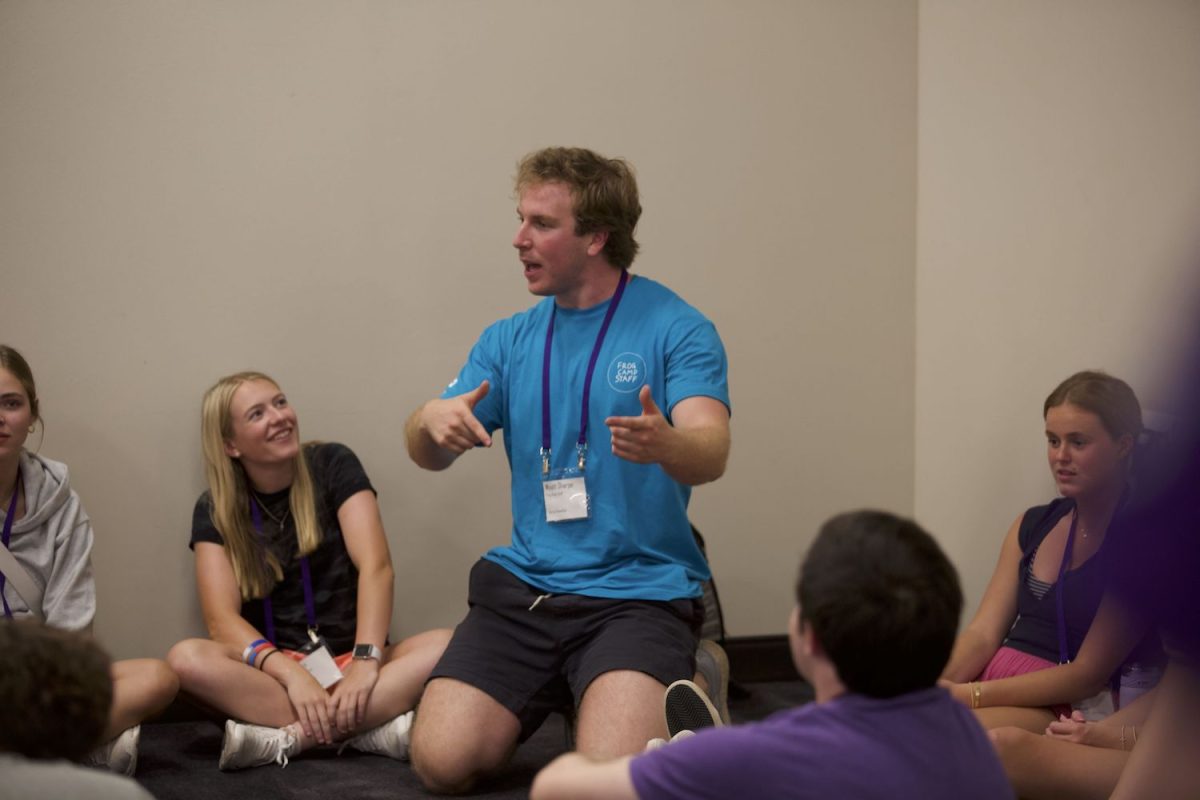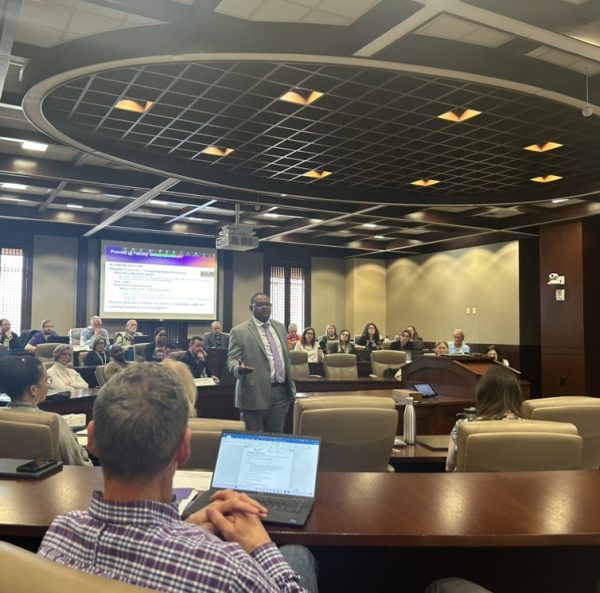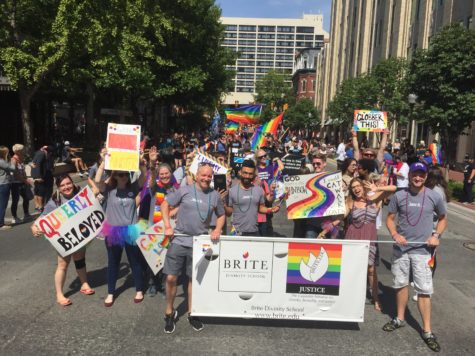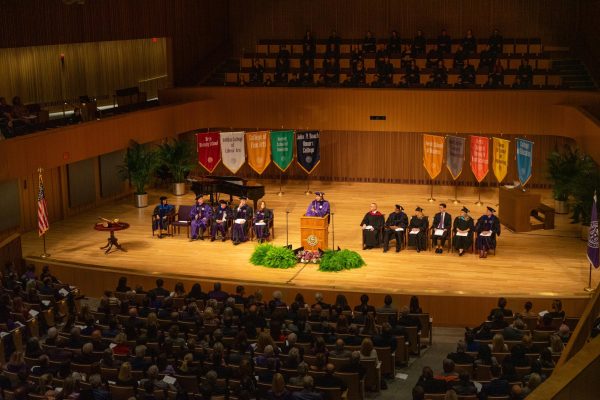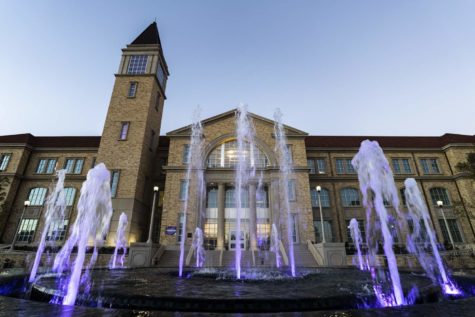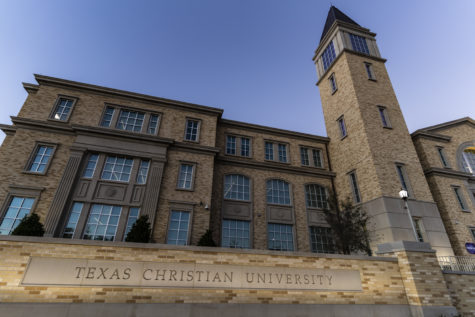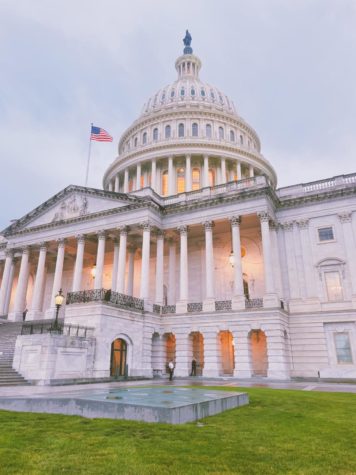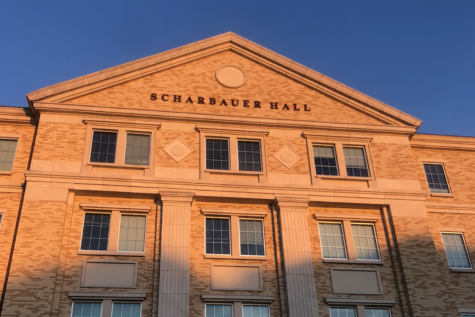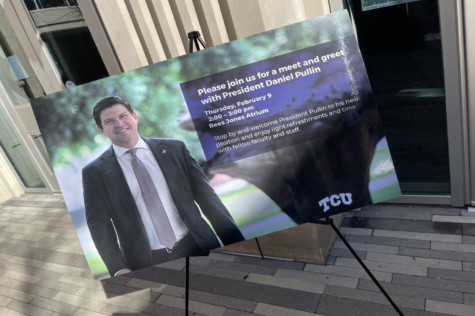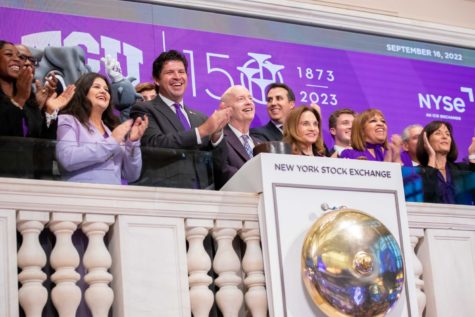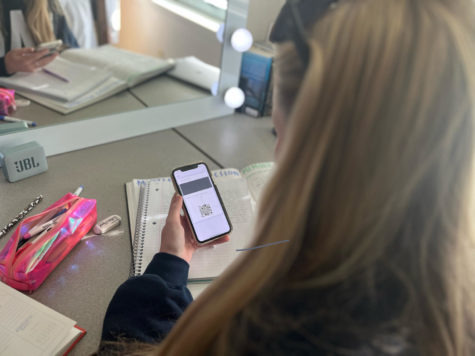- Administration
- Campus News
- Community
- Data Visualizations
- Multimedia
- News
- Shows
- TCU Daily Skiff
- TCU News Now
- The Archives
- Video
TCU’s diversity falls middle of the road compared to peer institutions
Published Apr 5, 2017
TCU received a record number of applications for the Class of 2020– 19,972. This year’s student body sits at about 71 percent white. Hispanic/Latino students make up the second largest category at 12 percent, according to TCU Factbook.
“I think we have a responsibility, a moral responsibility, to provide access to higher education for those who have historically been shut out, or who’ve had less of an opportunity,” said Heath Einstein, the interim dean of admission.
This year’s freshman class is the most diverse class in school history. The TCU Factbook says about 48 percent of white students were accepted, compared to about 14 percent of African-Americans and about 24 percent of Hispanic/Latino students.
However, those percentages are based on the number of applications submitted, but not necessarily completed, Einstein said.
“Students of color tend to complete their applications at a slightly lower rate than non-students of color,” he said.
This places TCU’s diversity level for the freshmen Class of 2016 on the higher end compared to what Chancellor Victor Boschini considers TCU’s peer institutions. Tulane University’s incoming class was about 76 percent white, Baylor University’s was about 66 percent and Vanderbilt University’s was about 47 percent.
Southern Methodist University doesn’t have statistics for the most recent incoming class, or its 2016 overall diversity statistics. But its overall diversity in 2015 sat at 74 percent white, compared with TCU’s 2015 level of 72 percent.
Einstein also said academic preparation is an important factor.
“You can’t just look at the acceptance rate. It’s also what academic experiences are they bringing to demonstrate they are prepared to meet academic success here,” he said.
Enrollment rates are slightly lower for students of color as well.
Of the 394 African-American students accepted, 88 enrolled. Of the 1,020 Hispanic students accepted, 251 enrolled. By comparison, 5,157 white students were accepted and 1,376 enrolled.
Part of the answer may be income and the school’s reputation, said Darron Turner, the newly appointed chief inclusion officer and Title IX coordinator.
“Part of that may be just gaining the reputation of the school in the communities they come from,” he said. “Part of that is we have to do a better job also of outreach.”
Timeka Gordon, the director of Inclusiveness and Intercultural Services, agrees.
“If we fail to go into diverse communities, then we’ve already lost, because it’s not about us telling them to come here, to get to know us so we can prove we are accepting and welcoming,” she said. “We have to get our tails out there and into the community to say we’re not afraid.”
Beyond Admission
Gordon also heads the Community Scholar program–a full-ride scholarship program recruiting from 11 DFW schools.
The program started with 12 students in 2000 as part of then-Chancellor Michael Ferrari’s effort to bring diversity to campus. This past fall, 44 first-year students won Community Scholar awards. The program also provides resources and requirements to help the scholars–many first generation college students–transition to college, such as a GPA and community service requirement, cultural events, academic workshops, and professional development seminars. They also must join a student organization and become an officer or leader by their junior year.
“They have a lot of requirements so that we’re making sure they are developing into great, ethical leaders, that are valued beyond just a numerical number,” Gordon said. “We want to expose them to so much so that when they leave here, they are actively engaged citizens.”
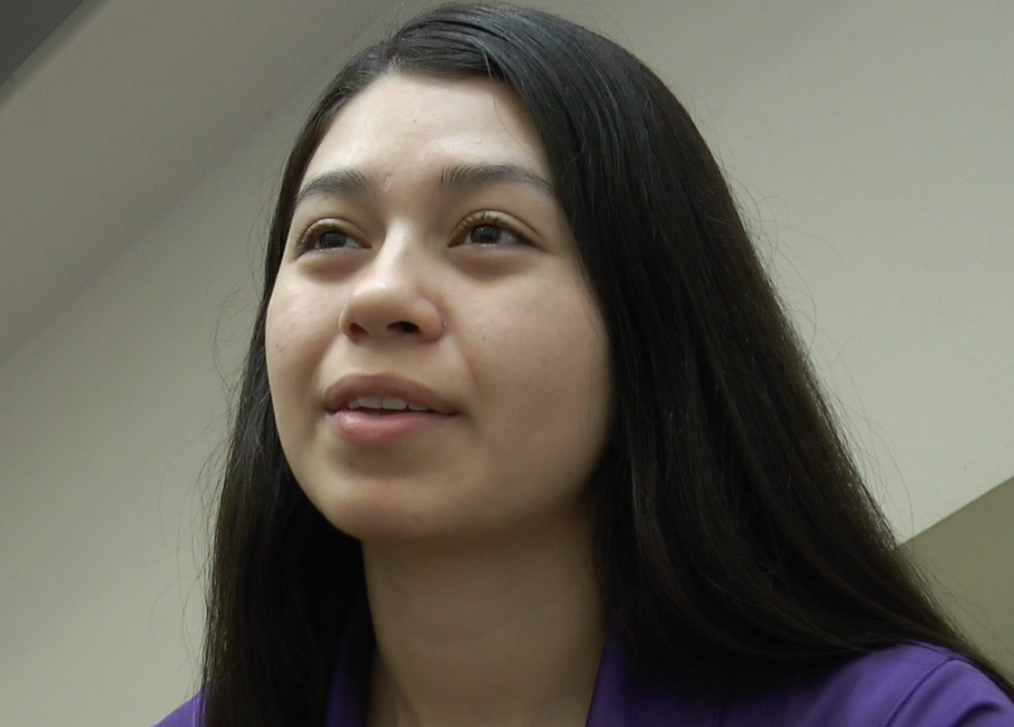
Lea Sandoval, a junior middle school math education major, is a Community Scholar. She said without her award, attending TCU would not have been possible.
“Tuition is kind of expensive, just a little bit, you know?” she said.
Sandoval is also a first generation college student.
“There is a good chunk in Community Scholars that’s first generation, so we can connect on that and bond over that, and help each other out,” she said.
Gordon said there is a misconception that the Community Scholars program is the sole reason for diversity on campus.
“We have students of color, students of color that are not Community Scholars and they should not be forgotten because they are valuable assets to this campus,” she said. “And then I laugh too because if Community Scholars is what makes TCU diverse, then have you not looked at our football and basketball teams?”
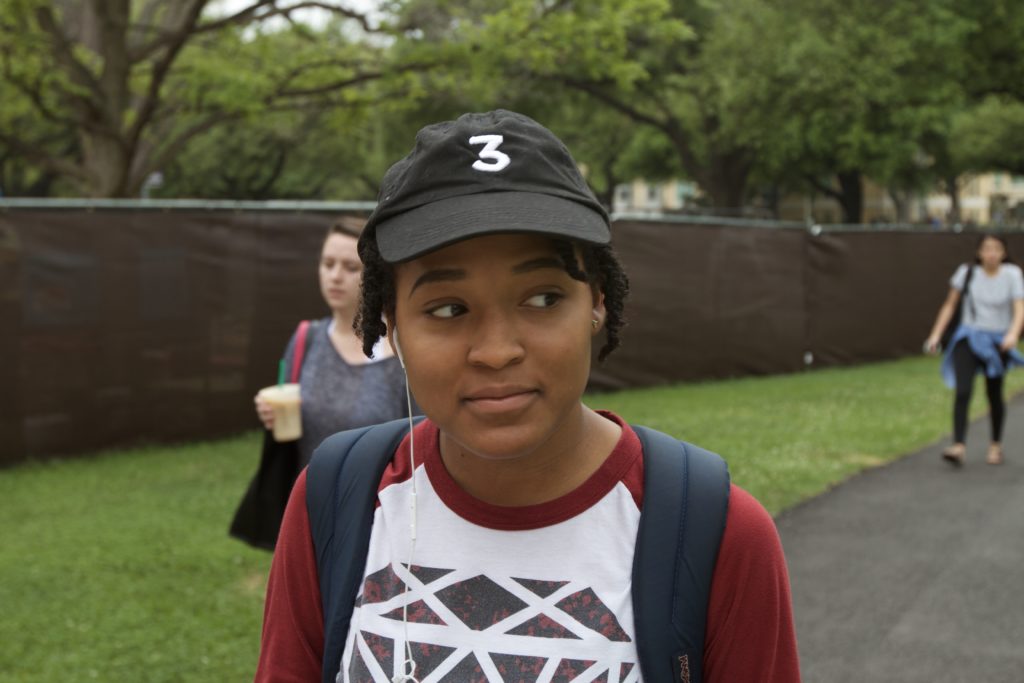
Kamry Henson falls into that category. The sophomore supply and value chain management major is a student of color but is neither an athlete nor a Community Scholar.
She hangs out with those in the Community Scholar program anyway and attends all their events because she said it’s hard to meet minority students if you aren’t in the program.
“The freshmen that were Community Scholars just assumed I was a Community Scholar because I was a minority hanging out with them,” Henson said.
She added that people have assumed she attends TCU on an athletic scholarship, or as an international student.
“I found my people, but we’re almost our own community,” Henson said. “It’s just another world, almost. It’s really disassociated.”
Gordon adds that the Community Scholars program itself is very diverse, including black, Hispanic, Asian, white and international students. But she stressed that diversity isn’t just about race, either.
“Even within the context of 150 Community Scholars that are right now on this campus, I have students that are undocumented, refugees, that are LGBTQIA, that are from single parent households who have lost a parent and in so many ways, that’s diversity too,” she said.
Sandoval said that’s one of her favorite parts about the program.
“I really enjoy being around people with different perspectives and learning how people view things,” she said. “So I really enjoy the diversity our program has.”
TCU also has a new diversity-focused program.
The recently approved Comparative Race and Ethnic Studies (CRES) program offers students a chance to earn a major, minor or emphasis in classes that pull from many interdisciplinary programs, including:
- African-American and Africana Studies
- Asian Studies, Latina/o Studies
- Middle East Studies, Jewish Studies
- British & Colonial/Post-Colonial Studies
- Women and Gender Studies
- Urban Studies
- Discovering Global Citizenship Quality Enhancement Plan
“They’re still doing some organization piece, but someone will start teaching classes in the fall,” Turner said. “You have faculty and staff that’s working hard to get the message out, along with students who pushed for this very hard.”
Mirroring the Student Body
In the fall of 2016, about 84 percent of TCU’s faculty was white, according to the TCU Factbook. Turner said the school needs diversity among its faculty and staff, and that when potential students visit, that matters to them.
“They want to know there are faculty and staff that look like them on campus,” he said. “So along with recruiting–the admissions department going out to recruit– I think we also as a university have to look at what we’re doing to make sure this climate is a climate in which people want to be in, any student we want to recruit.”
Because, he said, the faculty and staff should “mirror” the student body.
“Our employees have to mirror what we’re doing with our students,” Turner said. “We have to make sure that we are challenging students in ways in which they are not used to being challenged. And some of that is going to be visual, some of that is going to be information, some of that is going to be how you interact and what you know about cultures.”
Einstein said he too thinks all diversity is important, whether that’s racial, geographic or socioeconomic.
“We have to be exposed to people whose worldviews are different from ours,” he said. “That’s how we grow.”
But Einstein said diversity should not come at the cost of other university goals.
“We want as diverse a community as possible, so long as we’re not adversely impacting other important strategic objectives, most notably: academic profile of the institution,” he said.
Both Einstein and Turner said there aren’t any diversity percentage “goal figures.” They both said, “You’ll know it when you see it.”
“That may be 30 percent, that may be 40 percent, that may be less than that,” Turner said. “It’s just, you have a number that’s going to make sure we all experience each other.”


